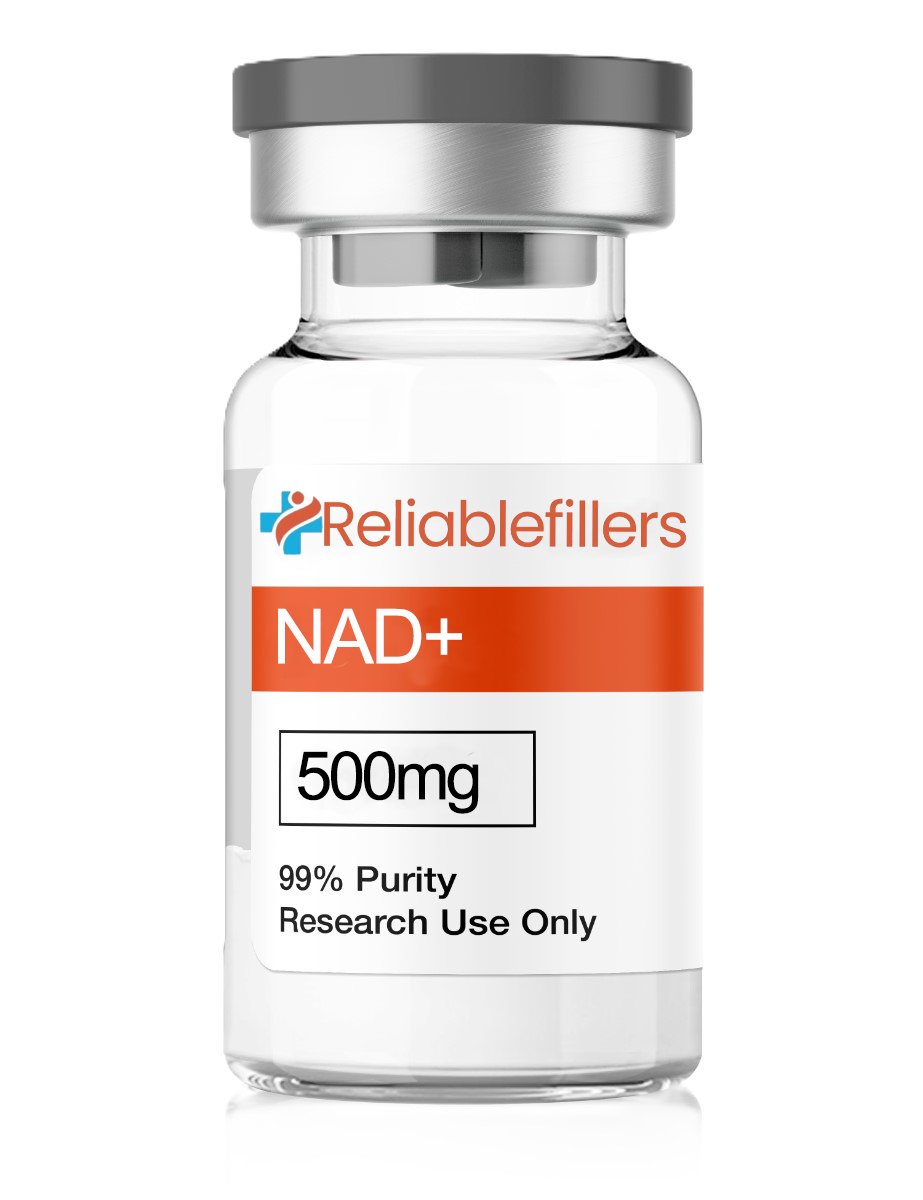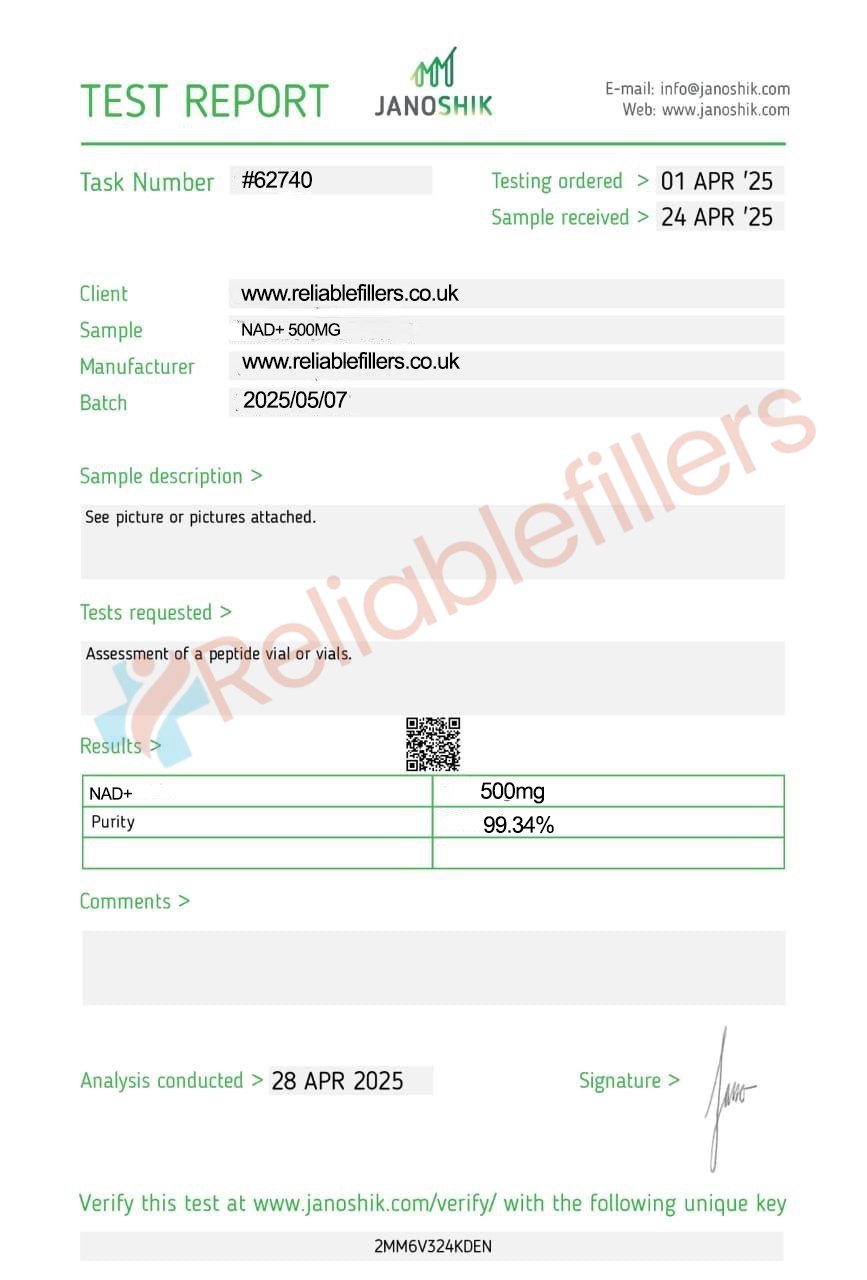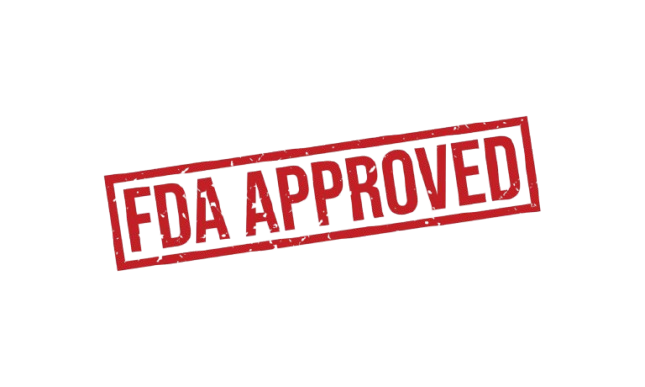NAD+ 500mg
NAD⁺ is a vital cellular coenzyme essential for energy production, DNA repair, and metabolic regulation. It plays a central role in mitochondrial function and supports sirtuin activity, which governs aging and stress response. As NAD⁺ levels naturally decline with age, supplementation offers profound support for cellular repair, energy metabolism, and longevity optimization, making it a foundational tool in modern regenerative research.
NAD⁺ offers a science-driven approach to cellular rejuvenation and energy optimization, ideal for individuals focused on longevity, cognitive performance, and metabolic health.
Key Benefits:
- Enhanced Cellular Energy: Fuels ATP production through mitochondrial pathways.
- DNA Repair Support: Activates PARPs and sirtuins involved in repairing genetic damage.
- Anti-Aging Effects: Helps reverse age-related NAD⁺ decline and supports healthy aging.
- Improved Metabolic Function: Regulates insulin sensitivity, fat oxidation, and glucose metabolism.
- Neurological Health: Supports cognitive function, neuroprotection, and mental clarity.
Nicotinamide adenine dinucleotide (NAD+) is a coenzyme present in all living cells, essential for energy metabolism and cellular function. It plays a pivotal role in redox reactions, transferring electrons during metabolic processes such as glycolysis, the tricarboxylic acid cycle, and oxidative phosphorylation. In research laboratory settings, NAD+ is studied for its involvement in maintaining cellular homeostasis and regulating enzymatic activity in non-human test subjects.
NAD+ serves as a substrate for NAD+-dependent enzymes, including sirtuins and poly (ADP-ribose) polymerases (PARPs), which are critical for DNA repair, chromatin remodeling, and stress response mechanisms. Research shows its potential in modulating mitochondrial function, enhancing cellular energy production, and influencing pathways related to longevity and resilience in test subjects. Its ability to regulate inflammatory responses and oxidative stress makes NAD+ a key focus in studies exploring metabolic and cellular health in research models.
NAD+ is an acronym for Nicotinamide Adenine Dinucleotide, an endogenous nucleotide that is considered to regulate primary functions such as metabolism, energy production, and DNA repair. It is also considered to act as a secondary messenger via calcium-dependent signaling mechanisms, possibly serving as an immunoregulatory component. NAD+ is considered by researchers to be naturally synthesized via the de novo mechanism of converting the amino acid tryptophan through several enzymatic steps. Researchers posit that there are five components to NAD+ synthesis, including tryptophan, nicotinamide, nicotinic acid, nicotinamide riboside, and nicotinamide mononucleotide. Once synthesized, research suggests it exerts over 500 enzymatic reactions and cellular processes to aid metabolic activities. Essentially, it is suggested to act as a coenzyme in redox functions, converted to NADH (the energy-carrying form of NAD+), which may involve other metabolic pathways.
Overview
Researchers have suggested Nicotinamide Adenine Dinucleotide (NAD+) to act as a coenzyme, with three major classes of enzymes including:
- Deacetylase enzymes in the sirtuin class (SIRTs)
- Poly ADP ribose polymerase (PARPs) enzymes, and
- Cyclic ADP ribose synthetase (cADPRS)
Research suggests that each class of enzymes interacts with NAD+ in the following possible respects:
- SIRTs may stimulate mitochondrial homeostasis, stem cell regeneration, loss of stem cells, and nerve degeneration.
- PARPs, composed of 17 different enzymes, may act alongside NAD+ enzymes and synthesize poly ADP ribose polymers, which may lead to genome stability.
- cADPRS include CD38 and CD157, which are considered to be key immunological cells. cADPRS appears to hydrolyze NAD+ and thereby may stimulate stem cell regeneration and DNA repair, which may be important for maintaining cell cycles.
Researchers suggest the above-mentioned enzymes to be NAD+ dependent enzymes, possibly acting based on the presence of Nicotinamide Adenine Dinucleotide (NAD). Researchers suggest that should all three enzymes be dependent on NAD+, they may potentially compete amongst themselves for bioavailability. It has been posited that the potential function of SIRTs, for instance, may lead to reduced PARPs activity and, thereby, potentially lead to weakened systems. Hence, it may be critical to maintain a balance between the availability and consumption of NAD+ to obtain optimal potential impact.(5)
Chemical Makeup
Molecular Formula: C21H27N7O14P2
Molecular Weight: 663.43 g/mol
Other Known Titles: nicotinamide adenine dinucleotide





Reviews
There are no reviews yet.